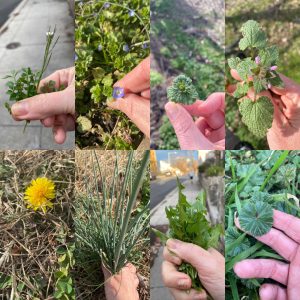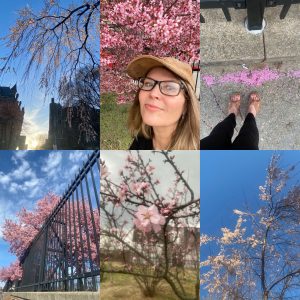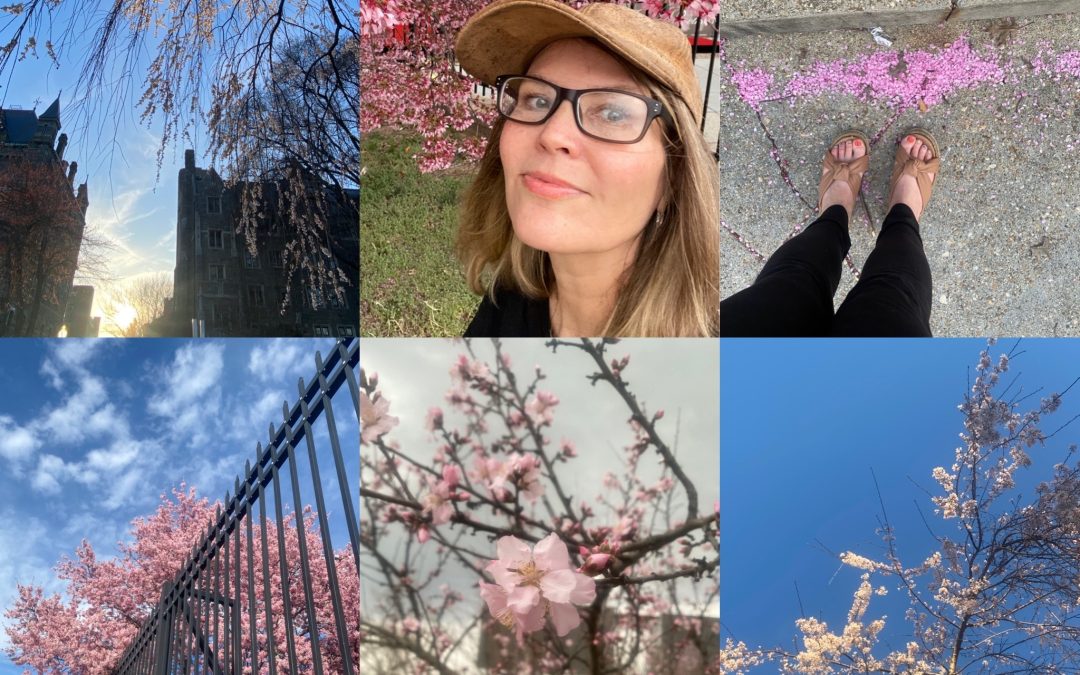Happy March, food & foraging friends!
It’s March madness, I tell you. Fighting bad juju on every front, including a one-two punch of a cold and the flu. Time to tincture more echinacea!
“Is it really safe to forage in the city?” is one of the most frequently asked questions in my workshops (along with the corollary, “but what about dog pee?”). This month I decided to take a deeper dive on the question with the help of a soil scientist from the University of Washington.
My usual answer is that any plant is susceptible from three elements in the environment: soil, air and water. All three can be contaminated in the urban wild, it’s true, and yet there is no place on Earth that could be considered pure anymore. They’ve found PFAS chemicals in arctic waters 3,000 feet below sea level. (As my middle school science teacher put it, there is no “away.”)
We simply cannot avoid exposure in modern society: it’s a matter of calculated tradeoffs. If your threshold of risk is too low, you will inevitably miss out on some benefits. (Driving and flying are riskier than staying at home, but if you know the speed I travel, you know that’s a risk I take lightly – because of the innumerable benefits I reap from my travels.)
Dr. Sally Brown’s work focuses on urban soils, particularly how they are impacted by recycled soil amendments like DC Water’s Bloom, whose distribution I oversee. Sally sent me several research papers comparing things like lead concentrations in soils in and out of the city and how that impacts levels in the plants they are grown in. For example, most plants avoid lead at all costs, which is a good thing. Carrots, for whatever reason, buck this trend.
“So what if you eat a wild carrot that has measurable lead in it? You will not suffer any harm. For something to be a real concern, it has to be a part of your diet for a long enough period of time and you have to eat enough of it to show any impact. What you forage will almost certainly constitute only a fraction of your diet for a portion of the year. So even if you can find lead in berries that you forage– how many berries will you eat? Will likely not be even a blip,” Sally shared.
For me, an important tradeoff to any risks of urban foraging is the numerous benefits of these wild plants — including many of the invasives we fight to keep out of our gardens and woodlands. Garlic mustard has a more robust nutrient profile than any other wild or cultivated green, according to research assembled by forager John Kallas. Japanese knotweed has super high levels of resveratrol. Purslane has five times more Omega 3 fatty acids than spinach. Contributing to the higher nutrient profile is the fact that vegetables so quickly start losing nutrients once harvested, so the chance to eat something snipped moments before has added value.
One of my favorite spots to forage in the city is my community garden, because I know what’s been put in the soil (and that includes the aforementioned Bloom, which Sally’s research shows can help neutralize soil contaminants).
At Bloom, we face intense scrutiny about potential contaminants, like PFAS, which end up in minute concentrations due to the significant chemical loads present in everyday products like dental floss and food packaging.
But the dose makes the poison. Even oxygen and water can be toxic in a high enough concentration. Some heavy metals (zinc and copper) are essential to the human diet and only problematic at higher doses. Likewise, pathways of exposure matter. Eating contaminated soil is more hazardous than eating plants grown in contaminated soil. It also tastes a lot worse! The science on plant uptake from soils is also complex. Not all compounds will be taken up equally by different species and by different parts of a plant.


t’s hard to make sweeping conclusions given how many variables are at play, but that in itself is a takeaway. Beware pat statements about the dangers of foraging on urban soils. The greatest danger of foraging is a failure to respect the rules of identification. Ingesting something you are not certain of is a risk no forager should take, unless we’ve finally reached the zombie apocalypse (are we there yet?).
Life is one long series of calculated risks leading to certain death at one point or another. To politely paraphrase my favorite mug, I’m still here, still fighting. I suffer from the chronic illness ME/CFS that came after a run-of-the-mill bug much like the one I’m fighting now, but that aside, I pass every health test with flying colors. So I’m going to keep eating my weird weeds and not stressing it, because stress leads to more illness than the things I eat.
Spring is upon us, and I’ve just announced a foraging walk to introduce some of the first-of-season edibles. I’m offering some free spots to any workers affected by layoffs so reach out for a discount code if you need it.
Wildly yours,
April
PS: About that dog pee: Undoubtedly more dangerous to plants than to you, as it contains a lot of nitrogen – essential to plant growth but can burn plants in too high a concentration. There’s that “the dose makes the poison” again! Here’s a wonky study on urban soils and “dog deposition”.
***
Image Block 2: We’re mere days (hours?) from peak cherry blossom season! If you missed last month’s edition, I covered sakura’s many uses in Japan then. Know your cherry blossoms! Can you spot the imposter here that’s a yummy cousin?

